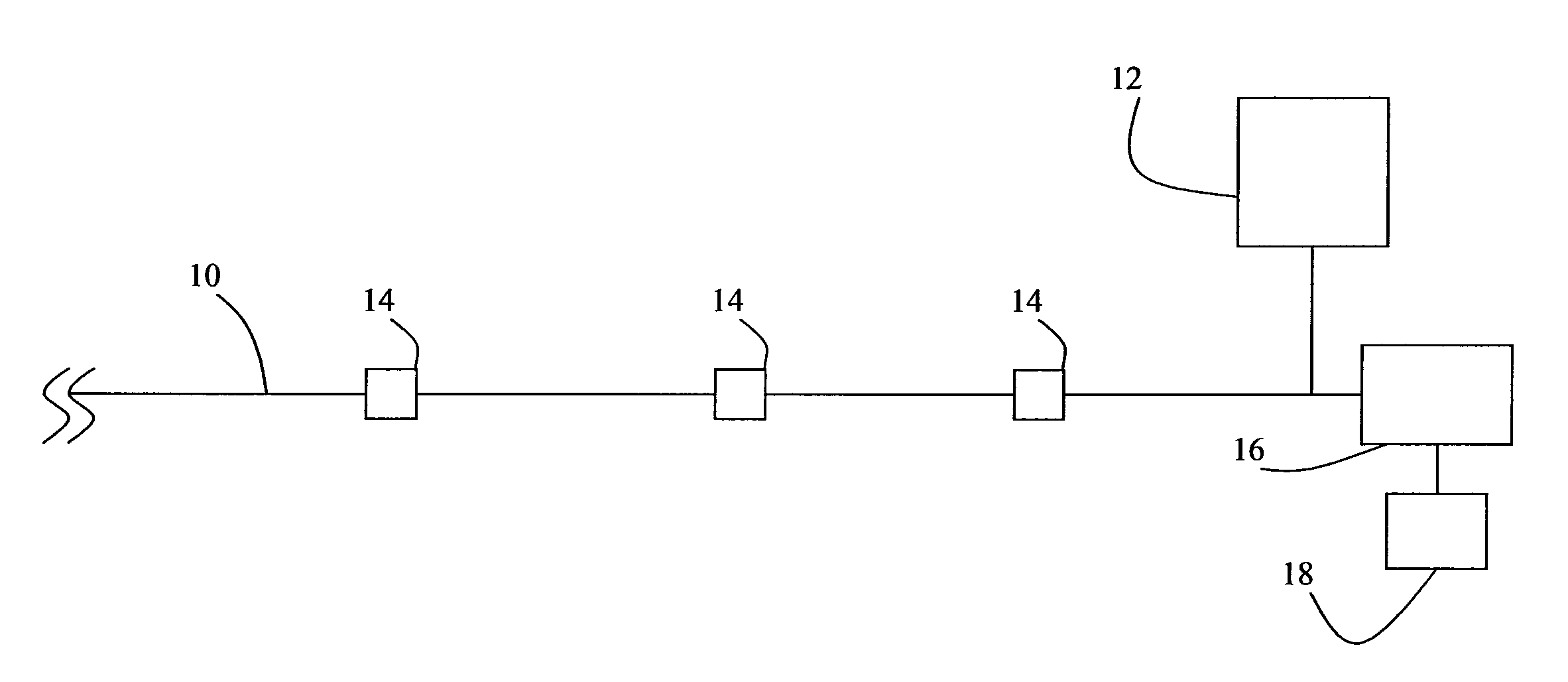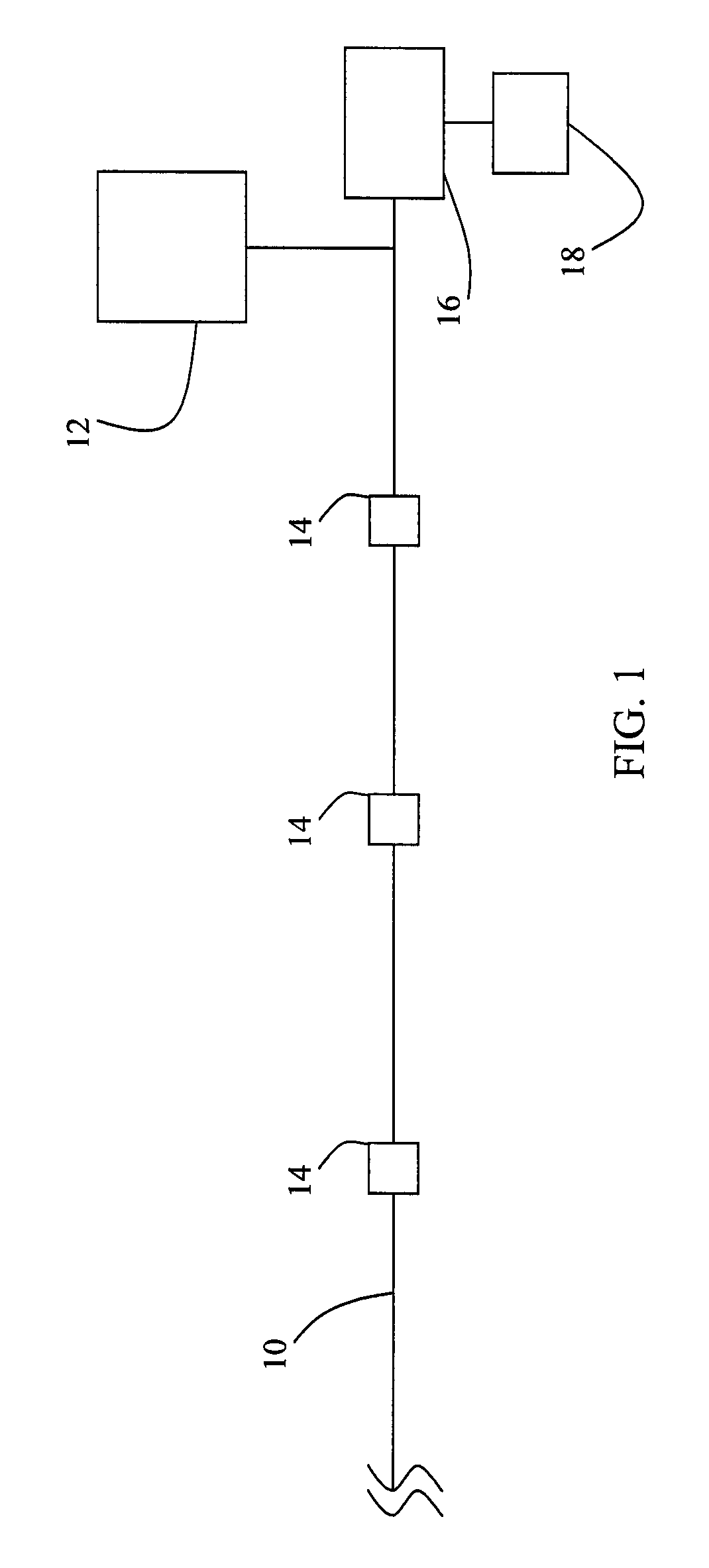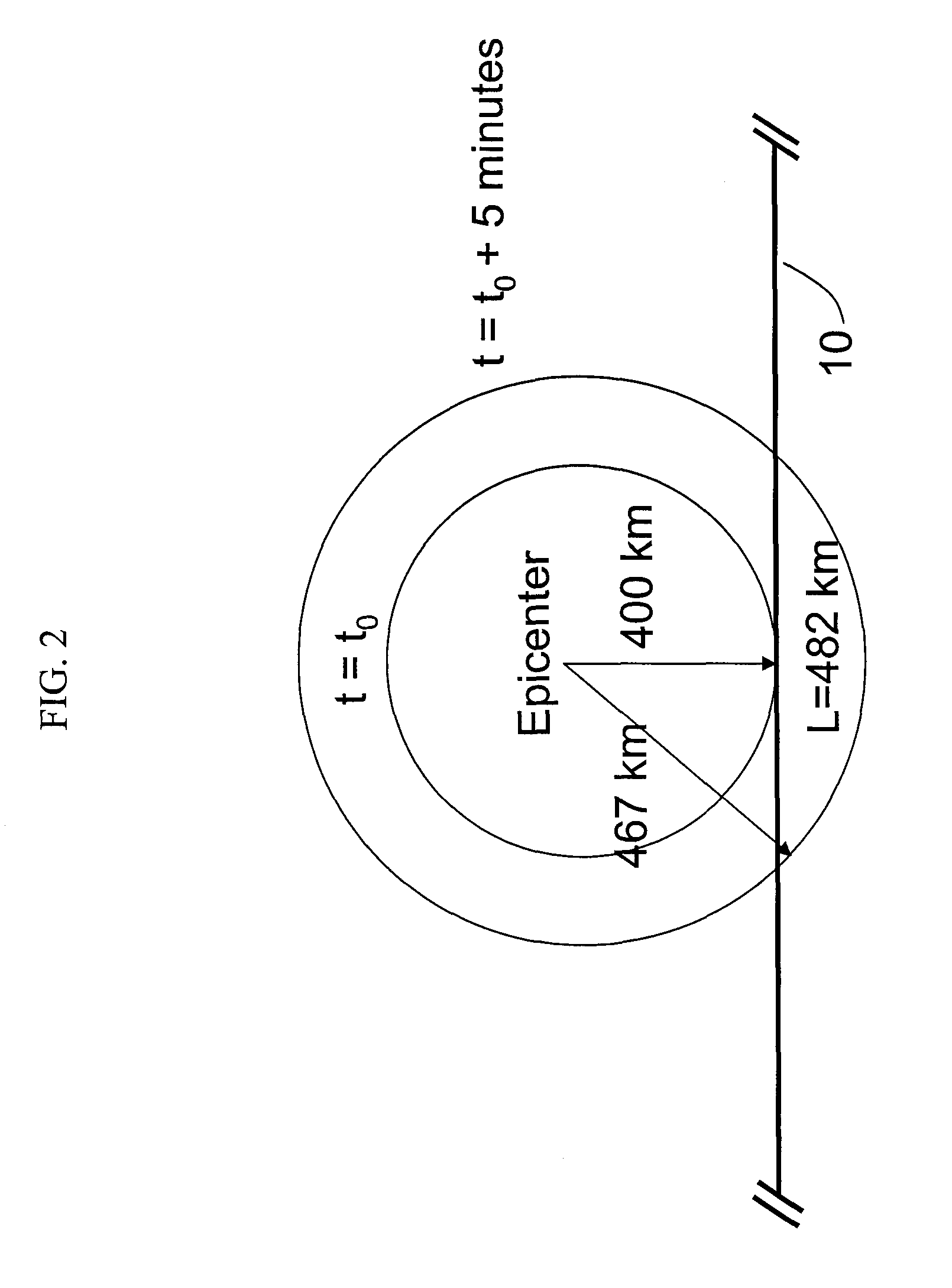Tsunami detection system
a detection system and tsunami technology, applied in the field of tsunami detection, can solve the problems of difficult detection and a greater false alarm rate of dart point measurements
- Summary
- Abstract
- Description
- Claims
- Application Information
AI Technical Summary
Benefits of technology
Problems solved by technology
Method used
Image
Examples
Embodiment Construction
[0017]Referring to FIG. 1, there is illustrated the components of the tsunami wave detection system of the present invention. A telecommunications grade optical fiber cable 10 is spanned across an ocean for use as a pressure sensor. In alternate embodiments more then one optical fiber cable 10 is employed. In a preferred embodiment, the length of the cable 10 is at least 1000 kilometers in length. A laser 12 is connected to the optical fiber cable to generate an optical signal across the optical fiber cable 10. Optical repeaters 14 are integrated into the cable 10 at predetermined distances to overcome losses in the optical signal due to attenuation by the optical fiber. The optical fiber cable 10 is connected to a digital signal processor 16 that will perform optical time delay reflectometry on the optical signal based on the Rayleigh scattering effect. In a preferred embodiment, the digital signal processor 16 is a programmable computer data processing system. State of the art opt...
PUM
 Login to View More
Login to View More Abstract
Description
Claims
Application Information
 Login to View More
Login to View More - R&D
- Intellectual Property
- Life Sciences
- Materials
- Tech Scout
- Unparalleled Data Quality
- Higher Quality Content
- 60% Fewer Hallucinations
Browse by: Latest US Patents, China's latest patents, Technical Efficacy Thesaurus, Application Domain, Technology Topic, Popular Technical Reports.
© 2025 PatSnap. All rights reserved.Legal|Privacy policy|Modern Slavery Act Transparency Statement|Sitemap|About US| Contact US: help@patsnap.com



